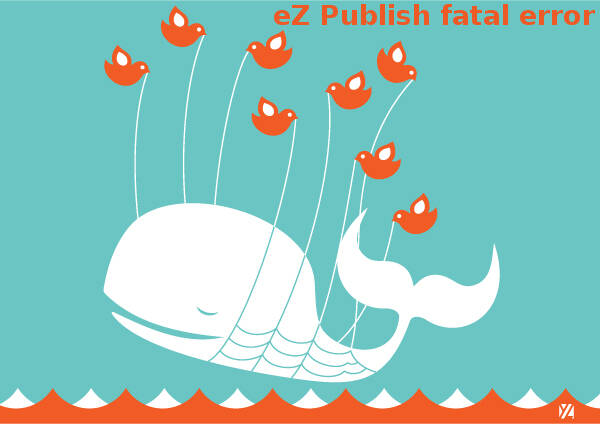
Vagrant and Ansible are tools to efficiently provision virtual machines (also called VMs or simply boxes).
This blog post will begin with a short discussion of why one would invest the time to use these tools, then cover the required software, an overview of how Vagrant works with VirtualBox and the use of Ansible to provision a VM.

eZ Publish 5 comes with built-in Varnish Cache support. Essentially this means that when content is published in the eZ Publish back-end, it notifies Varnish so that the Varnish cache is cleared. This feature is often called "purge-on-publish" and makes it so that you can cache your pages for a very long time, but that edits refresh the cache and thus appear immediately. To get this native support, you just have to use the "new stack" in eZ Publish. However, even if your legacy site is not ready to be fully upgraded to the new stack and you are running eZ Publish 5 in "legacy mode", you can take advantage of this native support.

Until some time ago, it was necessary to hack the eZ Publish legacy kernel in order to customize its generic error message, "Fatal error: The web server did not finish its request". This error occurs on all eZ Publish installations whenever there is an HTTP 500 status server error. It is a very common error; some examples of how it's triggered include: trying to access the value of a non-existent object attribute; the use of a non-existent PHP class or function; and too much memory usage.
Now, since this pull request from Mugo has been merged to the eZ Publish kernel, we have made it possible to customize the error page without hacking the kernel. In this post I will show you the new standard way to do this with a simple INI setting and your own PHP function.
A key component of a content management system or web application is the handling of JavaScript and CSS files, specifically around loading, combining, and minifying them. Loading fewer files and a smaller amount of data in each file leads to both server-side and client-side performance improvements. In eZ Publish 4 / legacy, this was handled nicely with an extension called ezjscore. Now in the eZ Publish 5 new stack, we have a Symfony tool called Assetic. In this post we'll introduce how Assetic works in eZ Publish 5.0 through 5.4.
Links are one of the core elements of the web. Links within body content are not only good for user experience, but also for SEO, engagement, and conversion. As we read, for example, a sports article, there might be links on the athlete names pointing to their biography pages. Or, when reading an author's bibliography, the book titles contained therein might be linked to the book pages. Adding and maintaining such in-body links can be very time-consuming; systems that auto-link the text can be a great help for content publishers.

Multi-language sites often have a set of base rules and then edge cases for different parts of the site. For example, on the French version of the site you might only want to show French content on most pages. For the news section, you might want to show press release results from all languages sorted in reverse chronological order, regardless of language. But for the case study section specifically, you might want to show all French versions first, following by case studies in any other language. For the most part, eZ Publish supports these features out of the box. In this post, we'll show you how to extend eZ Publish to sort results by language.
We recently added "quiz" functionality to eZ Publish by extending the eZ Survey extension. The purpose of this functionality is to enable companies to create "on-boarding" quizzes for new hires to learn about company policies and benefits. This was part of a larger intranet implementation.
Object states are used in many ways in eZ Publish, from workflows to menu management to controlling SEO tags. In eZ Publish 5, object state information is not available by default as one of the intrinsic attributes of a content or location object. In this post, we will show you how to access object states in PHP (usually in your custom controllers) or in Twig templates.
The eZ Tags extension by Netgen is a great solution to the problems of managing large or ad hoc taxonomies. It especially solves problems around editorial user experience.
Recently, Mugo has added a bunch of improvements to the extension. This post talks about 2: allowing users to reorder tags by assigning priorities, and to select tags from a tree menu.

In eZ Publish 4 / legacy, formatting link URLs is handled by the well-known ezurl() template operator. This is especially useful when you have multiple siteaccesses and you use URL-based matching. In eZ Publish 5, there is no single ezurl() equivalent; instead, there are several options depending on the type of link you want to display.
Index time plugins are one of the most important techniques of extending eZ Find functionality; they allow you to control how and what data is indexed. Combined with custom eZ Find queries, this opens up huge opportunities for providing access to content, well beyond mere 'search'.
In this post we will look at some typical use cases, briefly consider out of the box functionality and then dive into why you would want to make use of index time plugins and how you would go about setting one up.
Whenever you edit content in the eZ Publish Administration Interface, eZ Publish stores a new version. eZ Publish has a built-in feature to limit the number of previous versions it stores. However, as of the time of this posting, the eZ Publish 5.x public API to create and update content does not respect the version history limit (which, by default, stores 10 previous versions). We've written a quick function that restores this feature.